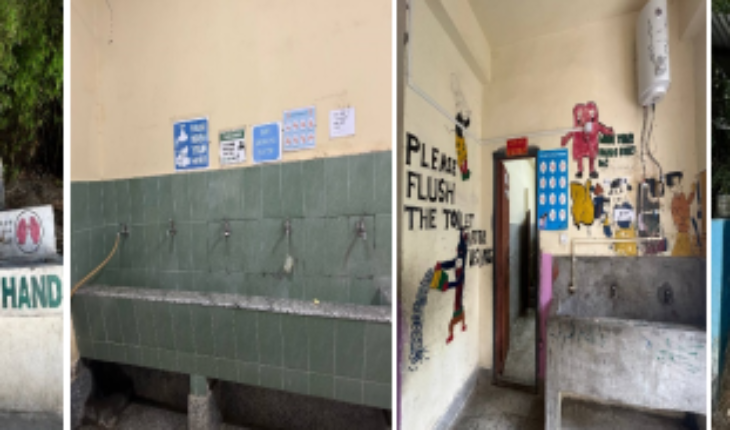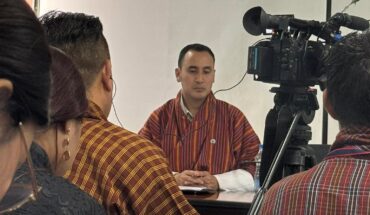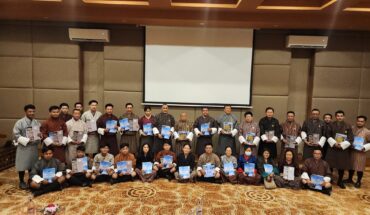
TIL BDR GHALLEY
Thimphu
The Royal Audit Authority (RAA) has called for immediate improvements in Water, Sanitation, and Hygiene (WASH) facilities in Thimphu Thromde schools after a performance audit uncovered widespread non-compliance with the National Standards for WASH facilities in Schools 2024.
The audit, conducted across 20 government schools between August and October 2024, assessed the adequacy and quality of WASH infrastructure and services. The findings were submitted to the Ministry of Education and Skills Development (MoESD) on 28 May 2025.
According to the report, “only 8 out of 20 schools met the standard for male toilets, and only 5 met the standard for female toilets.” The audit recorded a shortage of 63 male toilets, 149 female toilets, and 269 urinals across the 20 schools. One school with over 800 students had just four male toilets and three female toilets, falling short by 14 and 24 respectively. Many facilities lacked key features such as proper lighting, flushing systems, ventilation, and age-appropriate designs. Only one school complied with 12 of the 14 recommended design criteria.
Eighteen schools had handwashing stations, yet only five met the required ratio of one drinking tap per 50 students. While all schools had water storage systems, only 14 reported an uninterrupted water supply. Six schools depended on stored water due to irregularities. Student surveys showed that 27.4 percent of students had access to running water only sometimes, 4.8 percent rarely, and 1.7 percent not at all.
Water quality testing conducted in August and September 2024 revealed contamination with E. coli in six schools. Two additional schools that had not tested in August reported unsafe water in September. The audit stated, “Schools lacked a uniform testing schedule, and there was poor coordination with testing agencies.” Student responses indicated that 46.2 percent had missed school due to waterborne illnesses, while 38.1 percent expressed concerns over water quality.
Menstrual hygiene facilities were found to be inadequate in several schools. While all schools distributed sanitary pads largely through teacher or parent donations, only 10 schools had changing rooms in toilets. Four had none, and six had changing rooms that were unused or repurposed. Many disposal bins were uncovered or replaced by sacks and plastic bags. Sixteen schools reported lacking sufficient budget to procure sanitary products, soap, or toilet paper, and nine relied on external contributions. Consequently, 21.8 percent of students reported avoiding toilets due to unavailability of hygiene items.
Toilet functionality was another concern. Of 294 toilets reviewed, 14 were non-operational. Seventy-nine of the 167 flushing systems were found to be defective. Across 16 schools, 238 door latches were broken, and many older toilets lacked translucent windows, compromising privacy. Survey data showed only 36.5 percent of students felt the toilets functioned properly most of the time. A total of 759 students said they felt unsafe using school toilets due to poor maintenance and structural damage.
The physical distance between academic blocks and toilets was also flagged. Twelve schools had sanitation facilities located more than 100 metres away from academic blocks. As a result, 1,908 students said they avoided using toilets due to distance, while 2,941 students requested better accessibility. The audit observed that in some schools, urinals and taps were installed at heights unsuitable for young children. Several toilet blocks and changing rooms were found to be too small to meet the needs of adolescent girls.
Facilities for students with disabilities were insufficient in many of the designated inclusive schools. While some had ramps, the audit stated, “Many ramps were too steep, lacked handrails, and pathways were not wheelchair accessible.” Toilet doors were often too narrow, and inclusive toilet models were not in place. At Loselling Middle Secondary School, an officially designated inclusive school, not a single inclusive toilet was found.
The audit also found the absence of formal WASH management plans. Most schools relied on general health action plans and informal routines. Only seven schools had student led cleaning groups, and regular cleaning was inconsistent. Many schools lacked dedicated personnel for toilet maintenance. “The lack of preventive maintenance was found to be a major cause of the deteriorating infrastructure,” the report noted. Student feedback revealed that only 6 percent considered the toilets very clean, while 21.2 percent rated them dirty most of the time, and 5.1 percent described them as very dirty.
Budget constraints were cited as a major limiting factor. The report found that “most schools had no designated funds for WASH maintenance or for purchasing hygiene materials.” Schools often relied on ad hoc solutions and community donations. The audit also noted that the Education Monitoring Division under MoESD had not conducted any evaluation of WASH implementation and that a national monitoring and evaluation framework was lacking.
Thimphu Thromde, in its response to the audit, acknowledged that many of the WASH facilities were constructed before the introduction of the new standards. The Thromde stated that improvement works are underway based on need and within existing budget constraints. It confirmed that inclusive toilet models are being piloted in Changangkha Middle Secondary School and Sherabgatshel Primary School. The Thromde added, “Full-scale upgrades would require additional financial support.”
MoESD stated that it is planning a nationwide assessment of school WASH infrastructure. It announced that preventive maintenance training for school support staff will be conducted in May 2025 for both Thimphu Dzongkhag and Thimphu Thromde. “We are aligning WASH implementation with the National Education Policy and strengthening advocacy through collaboration with school clubs, local governments, and civil society,” the Ministry said in its official response.
The RAA recommended that MoESD, in collaboration with Thimphu Thromde and school management, develop a prioritized implementation plan. The audit advised upgrading facilities to ensure accessibility and inclusivity, allocating sustained budgets for WASH maintenance, determining manpower requirements based on student population, and instituting a robust monitoring and evaluation framework. It also recommended regular water testing, school-level WASH management plans, and hygiene awareness initiatives.
The findings in Thimphu, which has relatively better infrastructure compared to other regions, have raised broader concerns about WASH conditions in rural and remote schools. “Systemic and sustained efforts are needed to ensure all students have access to safe drinking water, adequate sanitation, and essential hygiene services in line with national standards.” RAA.





